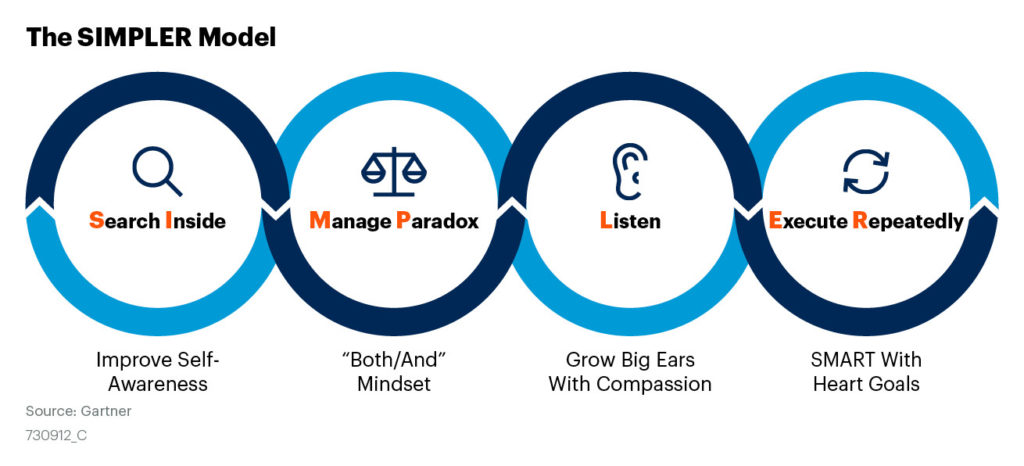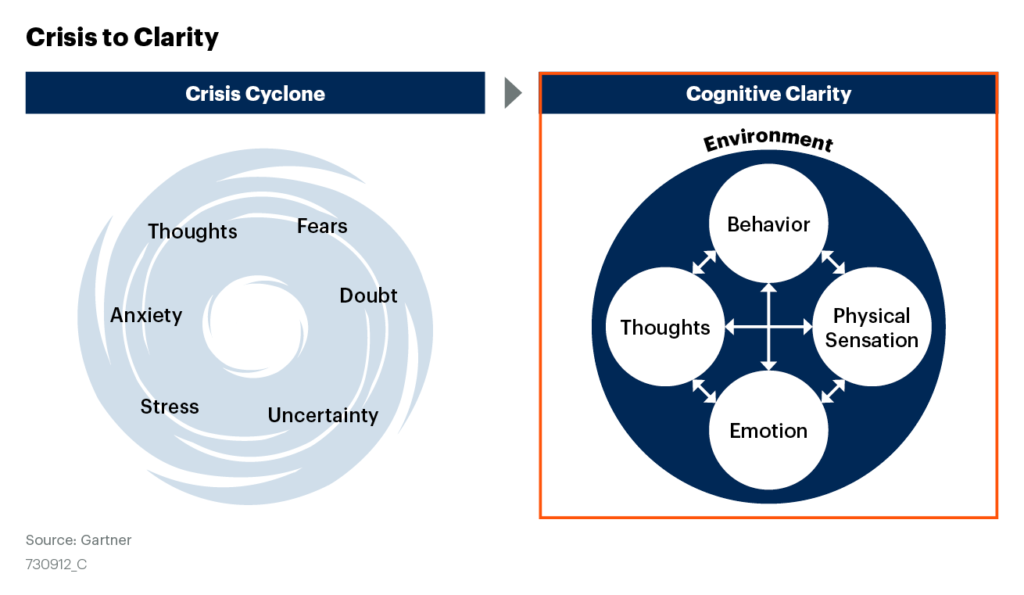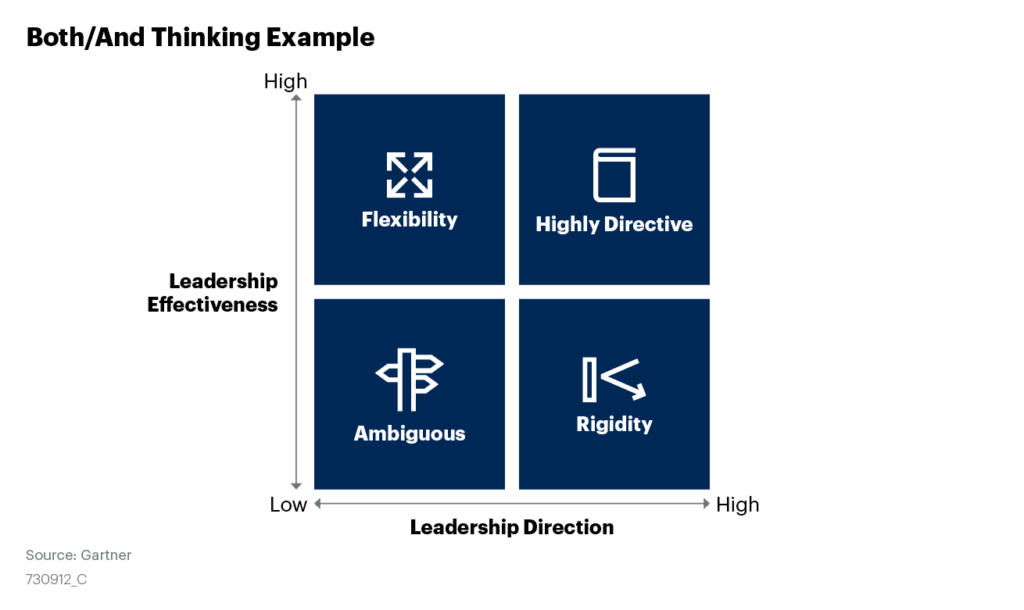The pandemic has shown us how a crisis acutely challenges our ability to survive, let alone thrive in such difficult times. It’s been a very difficult year, both professionally and personally for the overwhelming majority of us. Of course, for executive leaders, it’s no different.
Focusing on the CIO
In my work, I focus most of the research on the CIO and while it’s been a strong year for IT in many ways, the disruption that the pandemic brought still challenged the CIO in several ways.
The CIO’s capabilities to deal with uncertainty, manage their emotions, listen to themselves and others, and make decisions in the face of complex paradoxes have all been tested.
Key challenges
A few months ago, I started to dig into what the main challenges CIOs were facing. I noticed some emerge more than others and narrowed these down to:
- Staying self-aware and maintaining self-control – both difficult during challenging times without the right tools and practices. It’s harder when crises can activate powerful emotional responses, which can, in turn, lead to impulsive decisions when both are lacking.
- Seeking binary solutions to nonbinary problems – During times of uncertainty and complexity, CIOs uncomfortable with managing in paradox seek binary solutions to nonbinary problems. Thinking differently and seeking options in uncertainty require a mindset that many have not developed.
- Avoiding engagement with teams – CIOs who fail to regularly prioritize engagement with their teams in an authentic way and with compassion will negatively impact their teams’ morale and performance during a crisis.
Taking these into consideration, I assembled a model that looks to address these challenges. The SIMPLER model is the result.

The SIMPLER Model outlining the key competencies to be developed to better lead through a crisis. These include Searching Inside, Managing Paradox, Listening, and Executing Repeatedly.
CIOs must focus on the development of their emotional intelligence competencies to be better positioned to deal with the fears, doubts and uncertainties that complex change brings. The SIMPLER model details out the steps that CIOs should take to better prepare themselves to lead through this crisis — and the inevitable next one. Committing to this model can be not just a game-changer, but a life-changer.
Here’s a little more on each of these areas.
Search Inside
Self-awareness has been called the meta-skill of the 21st century, and recent research shows that 95% of us believe we are self-aware when only 12% to 15% of us actually are. A crisis can stir up a cyclonelike swirl of emotions that create havoc for CIOs to deal with. CIOs should commit time and effort now to develop a better understanding of themselves, enabling them to manage their emotions better.
CIOs can move from Crisis to Clarity by focusing on their thoughts, emotions, and physical sensations when a crisis hits. They must take the time to reflect on what behaviours were triggered.
This figure shows the different feelings and emotions that arise in a crisis (e.g., fears, doubt, stress, thoughts, anxiety, and uncertainty). Using the cross-sectional model and questions, the CIO can gain clarity.

Manage paradox by developing a “both/and” mindset
CIOs who combine either/or with both/and thinking (also known as polarity thinking) can find better solutions to complex problems. Instead of taking one option, or the another, look to see if parts of both options can be implemented.
Taking a “Both/And” mindset can help when dealing with uncertainty. The example below provides a visual on two poles that the leader could be faced with. Flexing and oscillating between both should be considered.
In this figure, it shows the Both/And Thinking example for Leadership Effectiveness and Leadership Direction, The 4 options are Flexibility, Ambiguous, Highly Directive, and Rigidity. The Leader moves between these using Both/And Thinking.

Listen with compassionate empathy by growing “bigger ears”
For CIOs looking to build successful teams, compassion is key. Studies show that leaders who are perceived to be compassionate have more followers, are seen as stronger, and are able to increase organizational collaboration and performance.
If CIOs practice compassionate empathy (also known as empathic concern) in times of crisis, they can add an additional superpower to their arsenal at a time when it’s needed most. The great news is listening is a competency that can be developed.
Execute repeatedly to ensure competencies stick
Our brain is a pretty lazy organ. It’s always looking for ways to conserve energy. This is known as “the law of least effort” and asserts that “if there are several ways of achieving the same goal, people will eventually gravitate to the least demanding course of action.”
That’s why creating new habits is difficult. Having systems and plans in place makes it easier. Go beyond just SMART goals, add some Heart into them, including emotion.
A parting word
Like many of the complex polarities that a CIO needs to balance, more than ever, the personal and professional poles must also be juggled as work and life become inseparable. Practising the approaches explained here for even just 10 minutes daily will lead to significant improvements over time. It takes discipline, it’s not easy, but, using this approach, it can be SIMPLER.
If you want to know more about the SIMPLER model and the precise action steps you can implement for each section, see “The SIMPLER Model: How to Lead Better Through a Crisis” on gartner.com
Thanks for reading and good luck!
This article was first published on Gartner Blog Network





